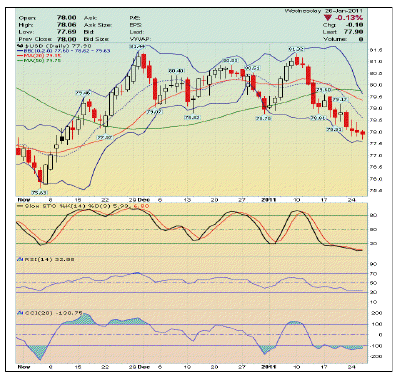Years ago, back in my stock broker days, I used to spend a lot of time on the phone with our high-end clients.
You could say that I made my living talking to millionaires. I’d chat with these guys worth more money than most of us make in three or four lifetimes.
Know what I learned?
Strangely the super-rich only wanted “steady, safe” investments. They wanted money market accounts and muni-bonds of all things – just because they seemed “safe.”
Well, then the credit crisis hit. Suddenly even those “safe” money market accounts were losing money. And muni-bond prices fell off a cliff.
In short, all of a sudden these “safe” assets weren’t safe anymore.
This isn’t uncommon. There is always a point where safe, steady investments suddenly turn a corner and become more risky.
During the credit crisis, we saw plenty of these “safe” investments fall by the wayside. and it’s about to happen again – in the currency market.
It’s the reason why I’m shorting these two so-called “safe haven” currencies this year.
These Two “Safe Currencies” Are
About to Come Under Attack
You have probably heard the terms “defensive currencies” or “safe haven” currencies. It refers to the currencies that rise in value when markets fall apart. Not surprisingly, these currencies did very well during the global recession.
…the Japanese yen and Swiss franc.
These two currencies have soared against most currencies for the past three years in a row. So the masses will think that there’s no reason why the party should come to an end now.
Heck, these currencies are on a roll – they have to keep rising, right? Well that may be what everyone believes. The reality is a bit different.
A shift is coming in these currencies. It’s a “tipping point” that they are beginning even now. The problem now is that these “safe” assets have gotten too strong for their own good.
Why I Believe the Yen & Franc
Rallies are About to End
Honestly, if you know what you’re looking for, it’s almost easy to see why the Japanese yen and Swiss franc are about to fall. Here’s a closer look at why…
- These strong currencies are killing their exporters. As an exporter, you want a cheap currency, because it makes your exported goods appear cheaper in the global market. Right now, Switzerland and Japan are facing the opposite problem – their currencies are so expensive that it’s hurting all these exporters. In fact, the biggest companies in Japan and Switzerland have been bleeding money because their currencies are simply too strong. That means these currencies will have to drop in value sooner rather than later.
- These strong currencies are slowing down the Swiss and Japanese economies. There’s a saying that the cure for higher prices is…higher prices. The higher prices go, the more it will zap the demand. Eventually prices reach a point when most people can’t afford it. Then the price tanks down to a level to finally meet the demand in the market again. Well, just as higher prices slow down the sales of a product, they also slow down the sales of goods and services within a country. That in turn hurts the country’s GDP. As the higher price currency slows down the country, it eventually makes the currency drop due to the dire economic outlook that the strong currency brought about. That’s about to unfold in the months ahead.
- These strong currencies are crushing stock prices, which crushes the sentiment in these countries. As stock prices fall, the whole country loses faith in the markets. Think about it. If your 401k and IRA are doing well, you’re happy and you spend more. However, if your 401k and IRA are sinking in value, you become more cautious. You start cutting back and spending less as you suddenly feel poorer. So crashing stock prices hurts investor sentiment. That can turn into a vicious cycle. And as the strong currency chips away at the earnings of these enormous exporters, it’s going to bring down their stock price and the overall sentiment in the country along with it.
- My Flash Point Indicator is showing that these currencies are about to head south! My Flash Point Indicator is really more of a system. It’s a combination of several technical indicators I watch. Right now, my entire system is saying that the yen and franc are coming down off their lofty levels.
How to Play this Trend for 2011
In short there are plenty of reasons both fundamental and technical that tell me these two safe havens are about to sink in value.
Now there are several ways you can play this (including ETFs etc. in the stock market). But my favorite ways are in the spot Forex market.
Already this year, I’ve been playing some stronger currencies against the sinking Japanese yen for my Currency Cross Trader subscribers.
We have already grabbed three 100 pip winners this year simply by pairing stronger currencies against the sinking Japanese yen. Soon, we will be doing the same with the overbought Swiss franc.
So get ready for the yen and franc to continue the process of softening and then beginning an outright downtrend later on in the year.
Bottom line: Nothing stays safe forever. Look to short the Japanese yen and Swiss franc this year.
Have a Nice Day,

Sean Hyman, Editor
Currency Cross Trader
blog: http://wcw.worldcurrencywatch.com

